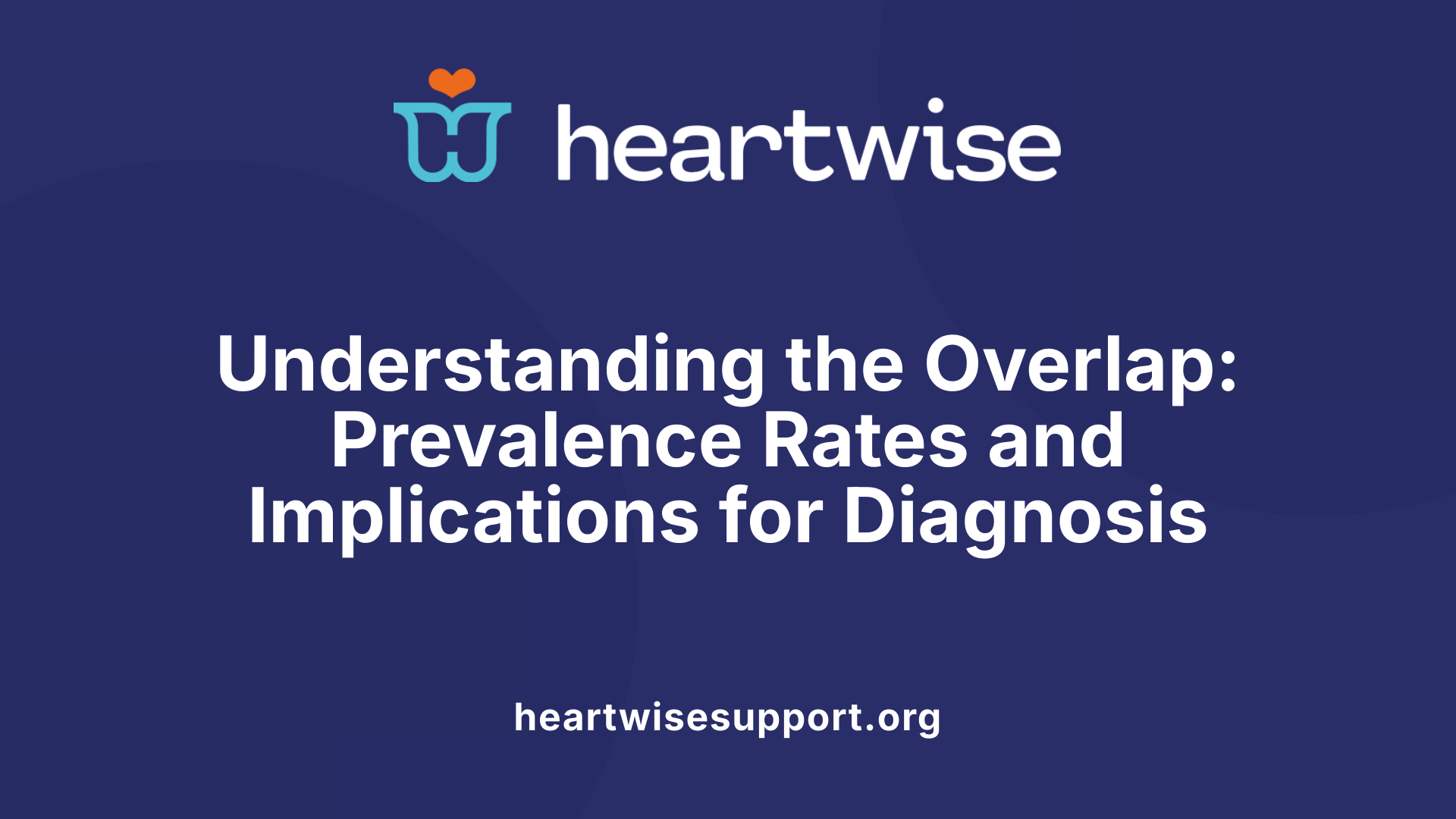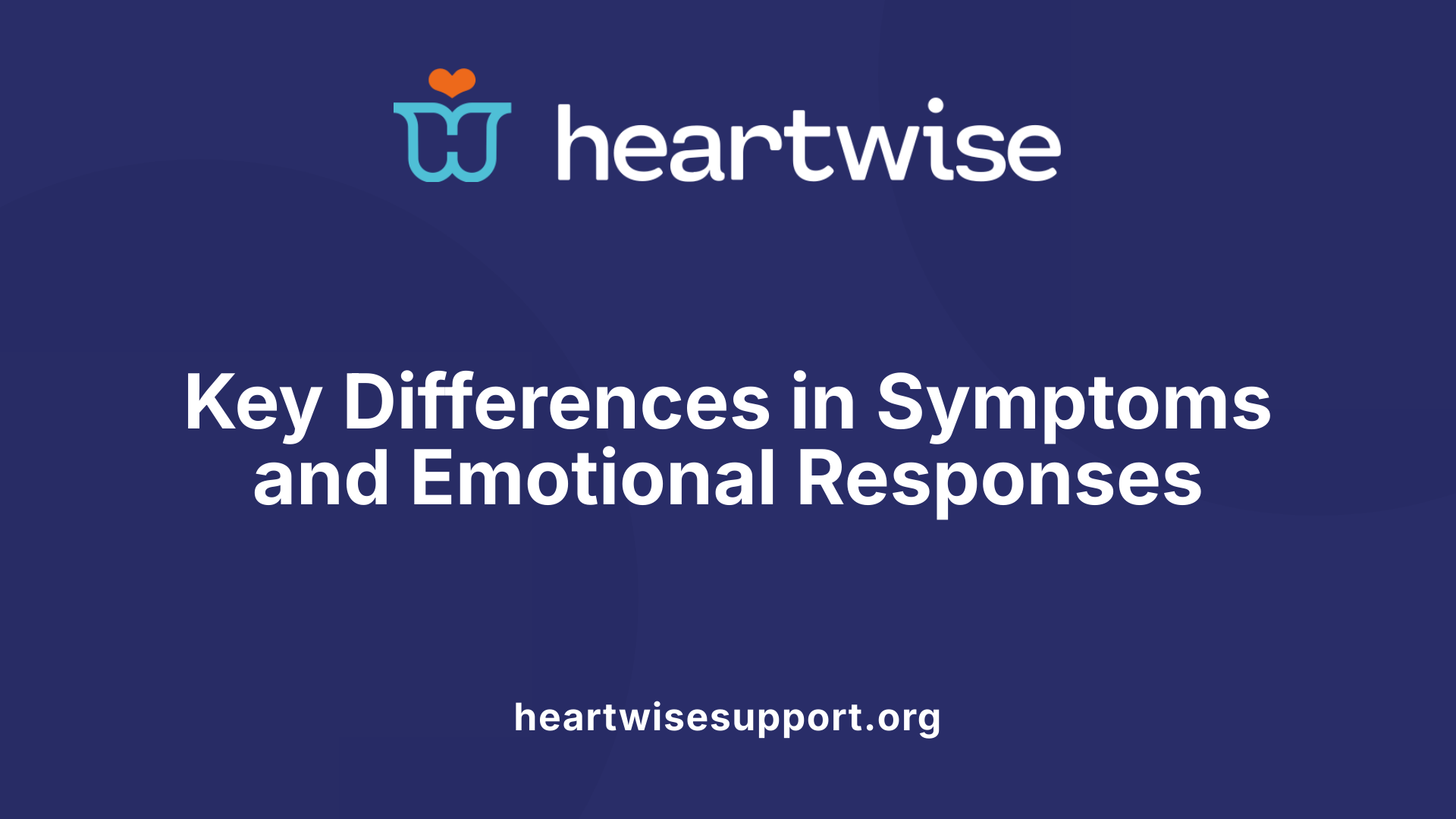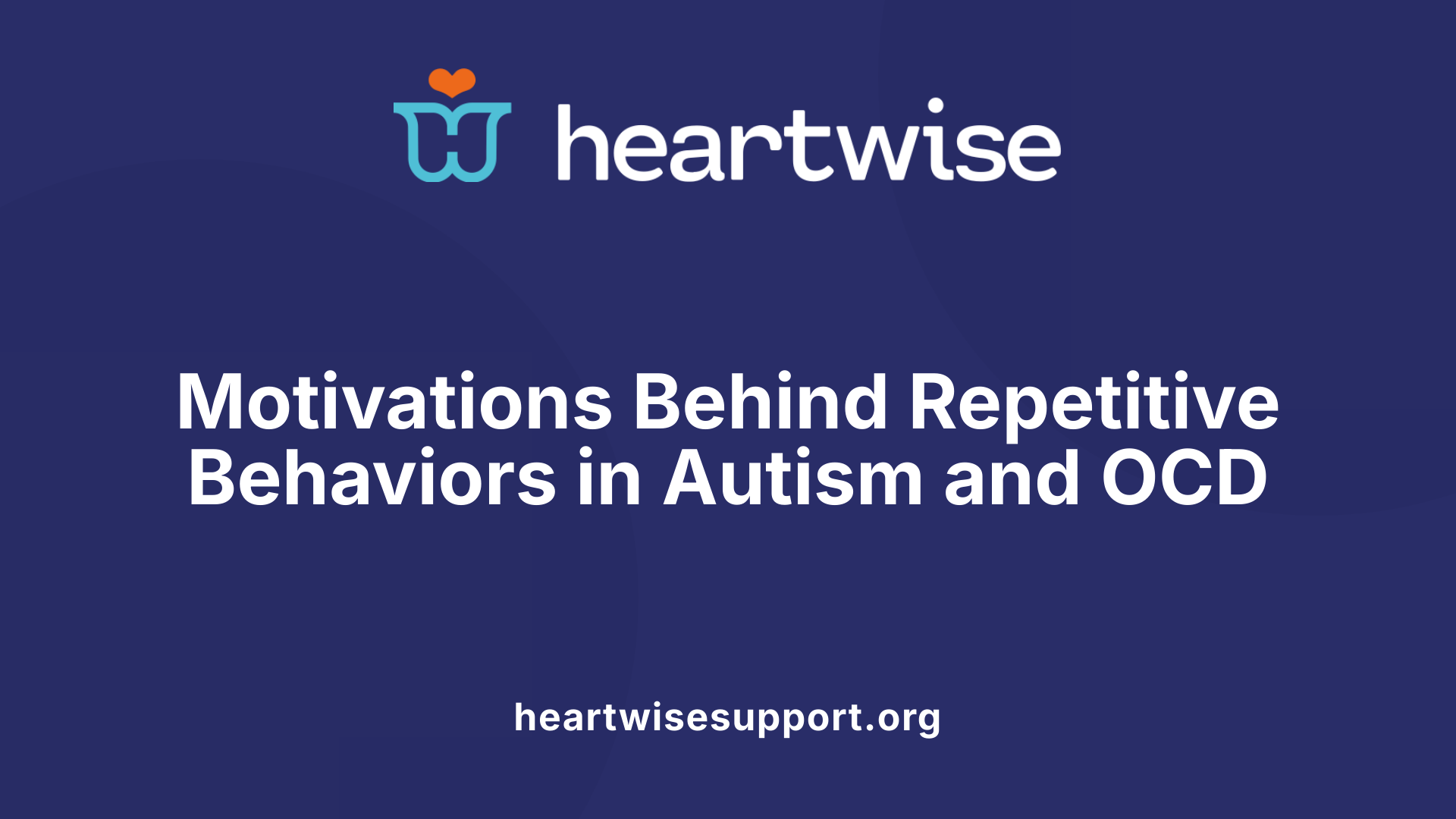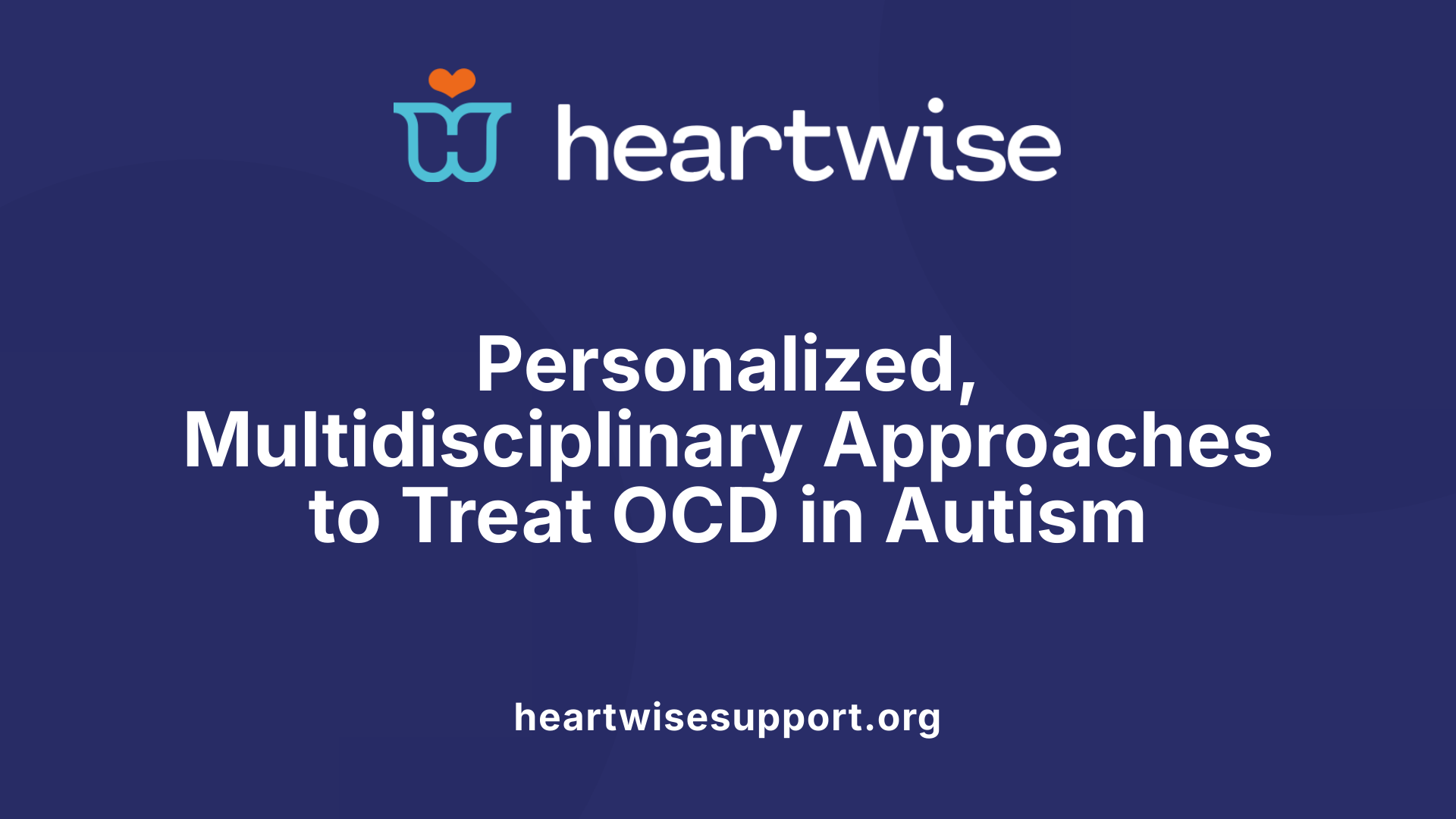Understanding the Complex Interplay Between OCD and Autism
Managing obsessive-compulsive disorder (OCD) in individuals with autism spectrum disorder (ASD) presents unique challenges due to overlapping behaviors and the need for tailored treatment approaches. This article explores the prevalence, diagnostic considerations, behavioral distinctions, and evidence-based therapies designed to address OCD within the autism community, emphasizing the importance of individualized strategies for optimal mental health outcomes.
Prevalence and Overlap of OCD and Autism

How common is the overlap between OCD and autism, and what does it mean?
OCD and autism often occur together, showing a significant overlap in their prevalence rates. Studies suggest that approximately 11.6% of young people with ASD also experience OCD. On the other hand, about 9.5% of individuals diagnosed with OCD also have autism spectrum disorder.
This overlap has important implications for diagnosis and treatment. Autistic individuals are more likely to develop OCD than those in the general population, where OCD affects roughly 2%. Conversely, ASD is more frequently seen among youth with OCD, with prevalence estimates ranging widely from 2.6% to over 37%.
Recognizing these overlapping conditions is essential because symptoms can resemble each other but be driven by different underlying motivations. For example, repetitive behaviors in autism are often soothing or interest-driven, whereas compulsions in OCD are typically distressing and aimed at reducing anxiety.
Failure to distinguish between these can lead to misdiagnosis or ineffective treatment strategies. Tailoring approaches to address both conditions effectively requires healthcare professionals to carefully evaluate symptoms and consider their origins.
Understanding the degree of overlap helps in devising multifaceted treatment plans that can improve functional outcomes and quality of life for individuals facing both challenges.
Additional resources: For more detailed prevalence data, searching for "Prevalence of OCD in autism spectrum disorder" can provide further insights into recent research and statistics.
Distinctive Features of OCD and Autism Symptoms

How do OCD and autism symptoms relate and differ from each other?
OCD and autism often display similar behaviors, such as repetitive actions and social challenges. However, their underlying reasons and emotional responses set them apart.
In autism, routines and repetitive behaviors often serve positive roles like self-soothing, enjoyment, or creating predictability. These behaviors are ego-syntonic, meaning individuals usually find them acceptable or even comforting.
In contrast, OCD behaviors are driven by intrusive and distressing thoughts called obsessions. These compulsions are ego-dystonic, which means they are unwanted, cause distress, and are performed to reduce anxiety. The motivation behind these behaviors is to eliminate or lessen obsessive fears.
Autism is a lifelong developmental condition evident early in childhood, affecting communication, social skills, and sensory processing. OCD, on the other hand, is an anxiety disorder that can develop at any age, characterized by persistent obsessions and compulsions.
Understanding these differences is crucial for accurate diagnosis and effective treatment planning. Misinterpreting OCD rituals as autism behaviors or vice versa can lead to inappropriate interventions.
Proper assessment involves examining the function, context, and emotional impact of behaviors. For example, if a behavior reduces anxiety and is driven by distressing thoughts, OCD may be involved. Conversely, if behaviors are primarily for comfort or enjoyment without accompanying distress, autism is more likely.
This distinction guides tailored therapies—Cognitive Behavioral Therapy (CBT) with Exposure and Response Prevention (ERP) for OCD, and behavioral strategies for autism.
In summary, recognizing whether behaviors stem from distress and unwanted thoughts or serve self-soothing functions helps ensure individuals receive the right support to improve their quality of life.
Behavioral and Ritualistic Patterns in Autism and OCD
 People with autism often display repetitive behaviors that serve practical or sensory functions. These behaviors, like lining up objects, hand-flapping, or insisting on routines, are usually ego-syntonic—meaning they are satisfying to the individual and not distressing. Such behaviors help with sensory regulation, comfort, or maintaining a sense of control.
People with autism often display repetitive behaviors that serve practical or sensory functions. These behaviors, like lining up objects, hand-flapping, or insisting on routines, are usually ego-syntonic—meaning they are satisfying to the individual and not distressing. Such behaviors help with sensory regulation, comfort, or maintaining a sense of control.
On the other hand, OCD involves compulsive rituals driven by intrusive thoughts called obsessions. These rituals are typically performed to reduce anxiety or prevent perceived harm. Unlike autism behaviors, OCD behaviors are ego-dystonic—meaning the individual finds them distressing, unwanted, and inconsistent with their desires.
The motivation behind these behaviors is what mainly differentiates OCD rituals from autism routines. OCD compulsions are performed to neutralize or alleviate distress caused by obsessive thoughts. For example, repeatedly washing hands to relieve contamination fears, even when the person recognizes this behavior as excessive. In contrast, routines in autism are often more about comfort or sensory input rather than anxiety.
Understanding these differences is essential for accurate diagnosis and effective treatment. Recognizing whether behaviors are driven by distress and intrusive thoughts or by a need for routine allows clinicians to tailor interventions appropriately.
While behaviors like lining up objects or checking may appear in both conditions, their underlying motivations differ significantly. In OCD, compulsive rituals are distressing, unwanted, and focused on reducing anxiety. In autism, repetitive behaviors tend to fulfill sensory needs or provide predictability and are generally non-distressing.
Research and clinical assessments emphasize the importance of evaluating the emotional and motivational context of behaviors. This approach helps distinguish between OCD-related rituals and autism stereotypies, leading to better targeted treatment strategies.
Effective Treatment Modalities for OCD in Autism
 Treating obsessive-compulsive disorder (OCD) in individuals with autism spectrum disorder (ASD) presents unique challenges, mainly because OCD behaviors like anxiety, repetitive rituals, and social difficulties often overlap with autism symptoms. To address this, treatment strategies need to be carefully tailored to meet the specific needs of autistic individuals.
Treating obsessive-compulsive disorder (OCD) in individuals with autism spectrum disorder (ASD) presents unique challenges, mainly because OCD behaviors like anxiety, repetitive rituals, and social difficulties often overlap with autism symptoms. To address this, treatment strategies need to be carefully tailored to meet the specific needs of autistic individuals.
A mainstay of OCD treatment is cognitive-behavioral therapy (CBT) integrated with exposure and response prevention (ERP). This modality is highly effective for OCD in general but requires modifications for autistic clients. These adjustments include increasing structure and predictability, using visual aids, concrete language, and multi-sensory teaching methods to accommodate communication and sensory sensitivities.
Involving family members and caregivers is crucial. They help reinforce therapy strategies, understand the behaviors, and provide consistent support, which enhances treatment engagement and effectiveness. For example, caregivers can help design exposure tasks that are meaningful and manageable for the individual.
A multidisciplinary approach often yields the best outcomes. This may include psychologists, occupational therapists, speech therapists, and psychiatrists working together to create an individualized plan. Addressing sensory issues and behavioral patterns is essential before diving into OCD-specific therapies to ensure the person is receptive and comfortable.
Although pharmacotherapy such as selective serotonin reuptake inhibitors (SSRIs) can be useful, their use should be carefully considered due to possible sensory sensitivities and side effects. Currently, evidence directly supporting CBT’s effectiveness in autistic populations with OCD is limited, primarily based on a small study with low certainty. This highlights the importance of ongoing research.
In summary, effective treatment for OCD in autism involves personalized, multidisciplinary strategies that adapt traditional therapies to the sensory, communicative, and behavioral needs of each individual. Employing visual tools, involving family, and ensuring a structured and supportive environment are vital steps toward successful management.
Managing Intrusive Thoughts and Anxiety in Autism with OCD

How can intrusive thoughts be managed in autistic individuals with OCD?
Managing intrusive thoughts in autistic individuals with OCD involves a respectful and personalized approach. Instead of trying to block or suppress these thoughts, it is often more effective to promote acceptance and foster a sense of curiosity about them. Recognizing that such thoughts are unwanted and not reflective of reality can help reduce their power and the distress they cause.
Establishing routines and routines can provide stability and predictability, which are especially helpful in managing anxiety. Avoiding known triggers that may provoke these intrusive thoughts is also an important step, as it prevents escalation of symptoms. Incorporating regular self-care activities—such as relaxation techniques, sensory calming strategies, and positive reinforcement—can help individuals maintain emotional balance.
Cognitive-behavioral therapy (CBT), particularly forms adapted for autistic individuals, includes techniques like exposure and response prevention (ERP). This method involves systematic and gradual exposure to feared thoughts or situations, helping individuals develop resilience and reduce compulsive responses. Tailored ERP respects sensory sensitivities and communication styles unique to autism, making the approach more effective.
Furthermore, professional support plays a vital role. Therapists with experience in both autism and OCD can guide families and individuals through customized interventions. Open communication, understanding social cues, and involving caregivers in therapy sessions bolster the treatment process.
Ultimately, a combination of acceptance strategies, structured routines, careful trigger management, targeted therapies, and supportive environments creates a comprehensive plan to help autistic individuals manage intrusive thoughts and reduce anxiety effectively.
Pharmacological Interventions for OCD in Autism
Medications play an important role in managing obsessive-compulsive disorder (OCD) symptoms in individuals with autism spectrum disorder (ASD). The first-line pharmacological treatments typically involve selective serotonin reuptake inhibitors (SSRIs), such as fluoxetine, fluvoxamine, sertraline, and paroxetine. These agents are often preferred because they target serotonin pathways implicated in both OCD and ASD, and many patients experience symptom relief within 4 to 6 weeks of starting the medication.
In addition to SSRIs, clomipramine, a tricyclic antidepressant, has shown efficacy in reducing OCD symptoms. However, its use requires careful monitoring due to potential side effects like seizures, dry mouth, and cardiac concerns.
Atypical antipsychotics, such as risperidone and aripiprazole, are frequently prescribed as complementary or adjunctive treatments, especially for severe or treatment-resistant cases. These medications have been observed to improve not only irritability and aggression but also OCD-related compulsions in some individuals.
Other drugs, including memantine and N-acetylcysteine, are considered experimental or adjunct options. Some studies suggest they can provide additional benefits, but they are not widely approved specifically for OCD in autistic populations.
Medication management should always be overseen by experienced clinicians. Regular monitoring is essential to assess both the effectiveness and any adverse effects of the treatment. When combined with therapies like adapted cognitive-behavioral therapy, particularly exposure and response prevention (ERP), these medications can lead to better overall outcomes.
| Medication Type | Examples | Use and Considerations | Side Effects / Notes |
|---|---|---|---|
| SSRIs | Fluoxetine, sertraline, fluvoxamine, paroxetine | First-line options, generally effective within weeks | Nausea, insomnia, agitation, increased risk of suicidal thoughts in some age groups |
| Tricyclic antidepressants | Clomipramine | Effective but requires careful monitoring | Seizures, cardiac issues, anticholinergic effects |
| Atypical antipsychotics | Risperidone, aripiprazole | Used as adjuncts, especially for severe symptoms | Weight gain, sedation, metabolic changes |
| Experimental/Adjunct | Memantine, N-acetylcysteine | Potential benefits, limited approval | Varies; generally well-tolerated in studies |
Effective treatment of OCD in individuals with autism requires careful medication selection, ongoing assessment, and often an integrated approach with behavioral therapies to optimize outcomes.
Integrating Support Systems and Resources
Managing OCD in individuals with autism involves a network of support systems designed to address the complex challenges posed by co-occurring conditions. Healthcare providers, social services, and specialized support groups form the backbone of these pathways.
A common starting point is consulting a general practitioner (GP) who can provide initial assessment and referral to specialized mental health and autism services. These specialized services offer tailored therapies such as CBT adapted for autism, medication management, and behavioral interventions.
Family and caregiver involvement is crucial for successful management. Families help reinforce therapeutic goals, assist with daily routines, and offer emotional support. Engaging caregivers in psychoeducation programs improves understanding of OCD and ASD, fostering a supportive environment.
Educational institutions play a vital role by adapting classroom settings to meet sensory sensitivities and behavioral needs. Through collaboration with special educators and therapists, schools can implement individualized education plans (IEPs) that incorporate strategies for managing anxiety, repetitive behaviors, and social challenges.
Community resources are equally important. Organizations like the International OCD Foundation (IOCDF) and the Autism Society provide valuable tools, training, and peer support for families and individuals. Support groups enable sharing experiences, coping tips, and emotional encouragement.
A multidisciplinary approach—integrating medical, psychological, educational, and community resources—ensures a comprehensive plan that addresses the diverse needs of individuals with both OCD and ASD. This collaboration fosters sustained progress, improved functioning, and a better quality of life.
| Support Pathway | Description | Additional Details |
|---|---|---|
| Medical Assessment | Initial diagnosis and referral | Involves GPs and specialists like psychiatrists or neurologists |
| Therapeutic Services | CBT, behavioral therapies, medication | Adapted for autism needs, including visual supports |
| Family Support | Psychoeducation, skill building | Family involvement enhances outcomes |
| Educational Resources | School accommodations, training | IEPs, sensory-friendly environments |
| Community Resources | Support groups, informational sources | IOCDF, Autism Society, peer support networks |
The Importance of Personalized and Multidisciplinary Care
Customizing treatment plans based on individual needs
Effective management of OCD in individuals with autism requires personalized treatment strategies. Since behaviors linked to OCD and ASD can look similar but stem from different motivations, clinicians must tailor interventions to each person. This involves assessing the specific behaviors, understanding their triggers, and differentiating between autistic routines and compulsive rituals.
Collaboration among clinicians, families, and educators
A team approach is essential. Psychologists, psychiatrists, educators, families, and caregivers must work together to design and implement effective strategies. Family involvement is particularly vital, as caregivers can reinforce positive behaviors and help generalize skills across settings.
Monitoring and adjusting interventions over time
Continuous assessment allows for the refinement of treatment plans. As individuals develop and their needs evolve, interventions should be adapted. Regular monitoring helps identify what’s working and what needs modification, ensuring continual progress.
Addressing sensory and communication preferences
Many autistic individuals have unique sensory and communication preferences that influence treatment effectiveness. Incorporating sensory-friendly environments and using visual or alternative communication methods can improve engagement and comfort, ultimately enhancing the success of therapies like CBT and ERP.
Towards Better Outcomes in OCD and Autism
Effective management of OCD in individuals with autism requires a nuanced, multidimensional approach. Tailoring behavioral therapies like CBT and ERP to accommodate sensory sensitivities and communication styles, combined with careful pharmacological management, fosters resilience and reduces distress. Recognizing the unique presentation of each individual and involving families, caregivers, and support systems ensures that interventions are both accessible and impactful. As research advances and clinical experience grows, integrated, personalized care holds the promise of significantly improving quality of life for those navigating the dual challenges of OCD and autism.
References
- Treatments for Obsessive-Compulsive Disorder comorbid with ...
- OCD Treatment Considerations for Autistic Individuals - AANE
- OCD and autism - Autism Speaks
- OCD - National Autistic Society
- Severe OCD Exacerbation in a Patient with Autism Spectrum Disorder
- Psychopharmacological management of obsessive–compulsive ...
- How to Treat OCD in Autistic Children & Adults - Elemy
- 7 Tips for Dealing with Intrusive Thoughts and Thought Spirals as an ...











